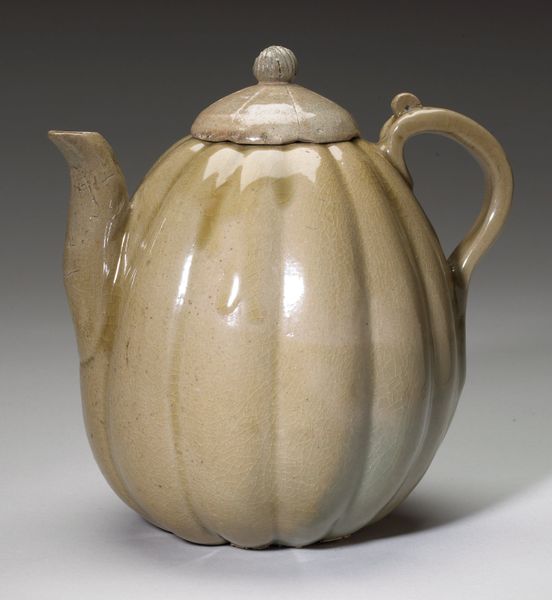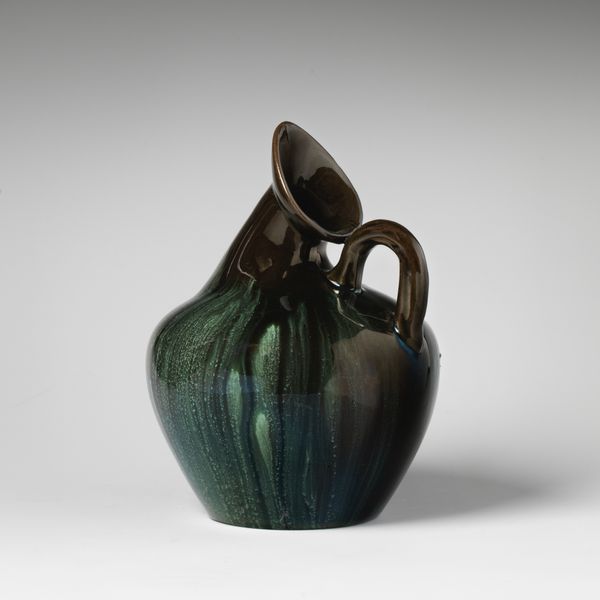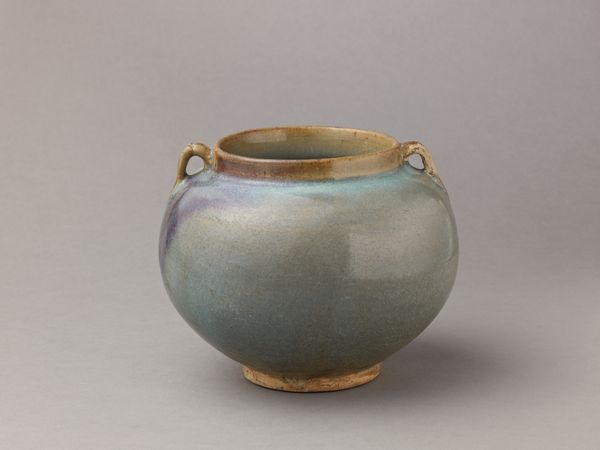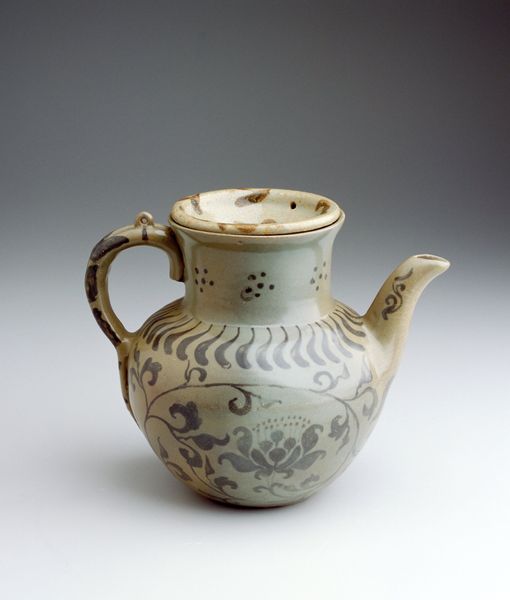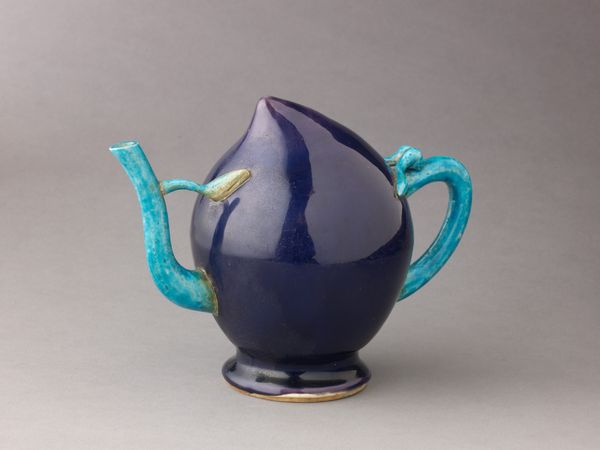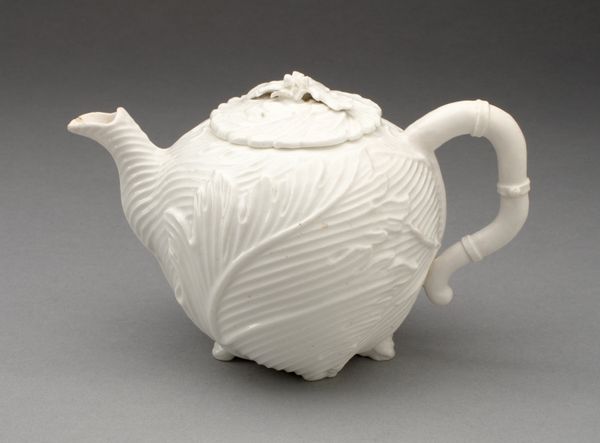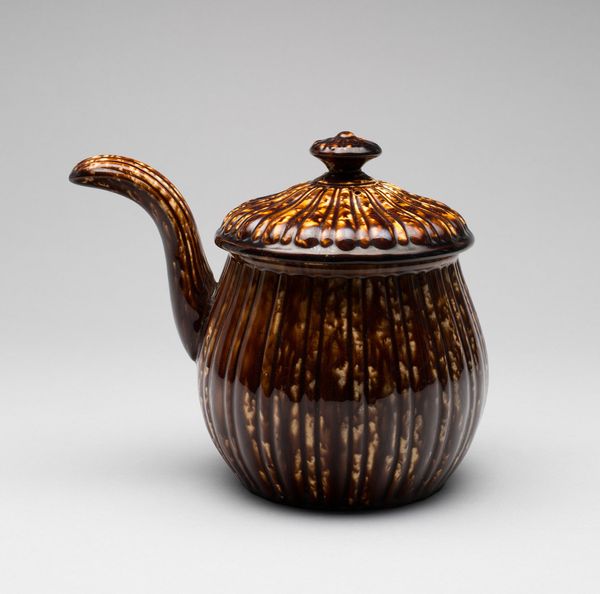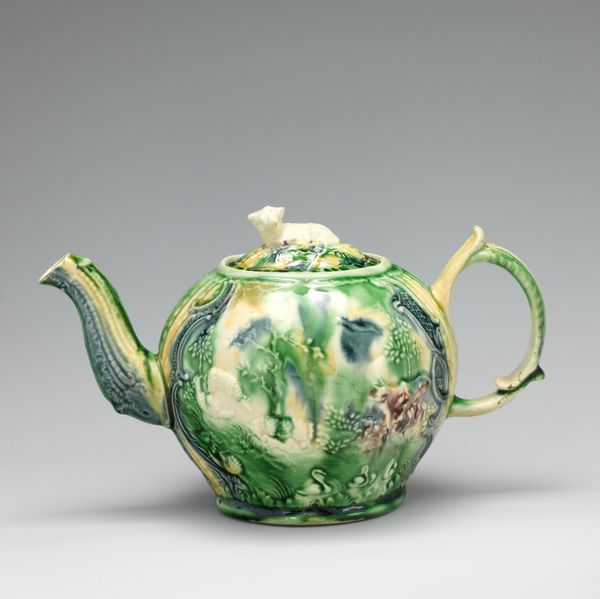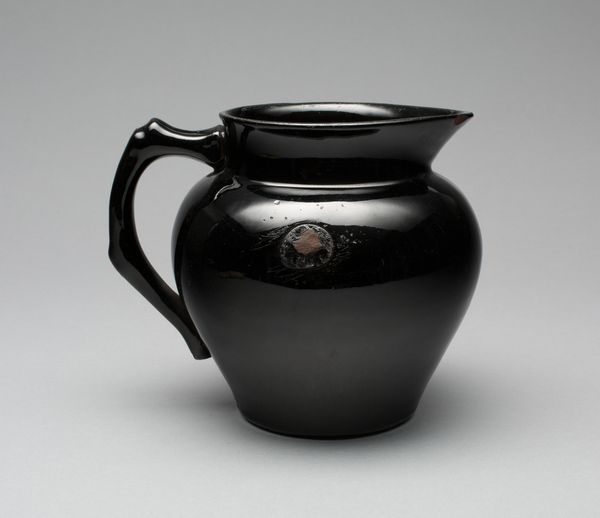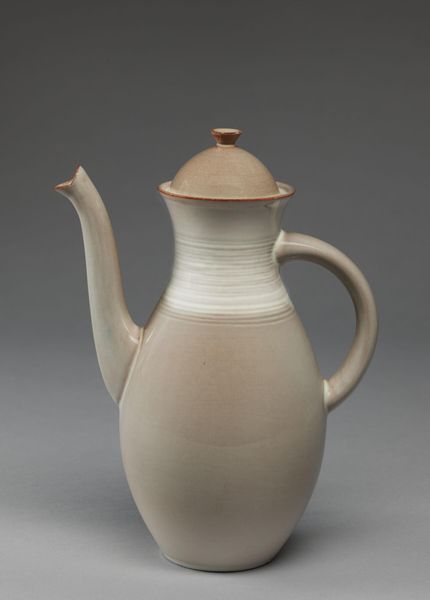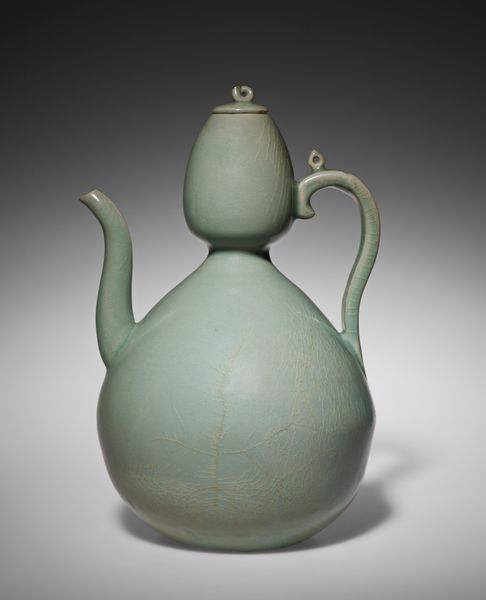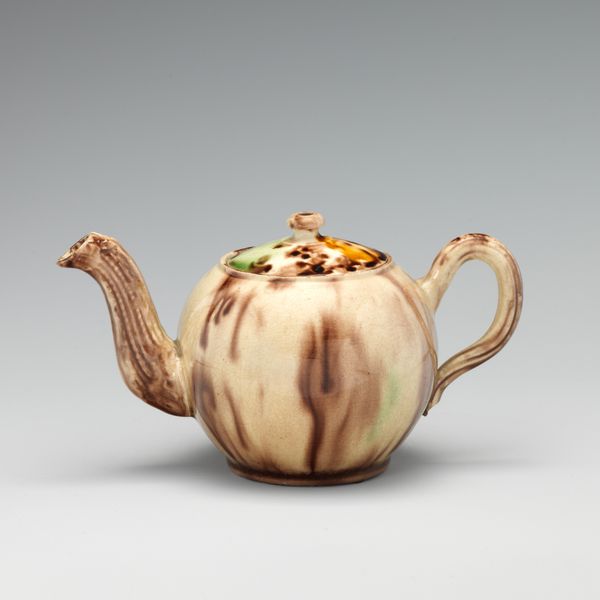
ceramic
#
medieval
#
asian-art
#
ceramic
Dimensions: 7 5/8 × 8 3/16 × 6 1/4 in. (19.37 × 20.8 × 15.88 cm)
Copyright: Public Domain
This is an anonymous ewer in the shape of a melon, crafted with a celadon glaze. Its form is deceptive in that it's both organic and geometric: the melon's curves are subtly divided into precise vertical segments. The overall effect is a harmonious blend of naturalism and formal order. The celadon glaze is key here. Its subtle, cool green hue evokes a sense of tranquility. But look closer and you'll see fine crackles across the surface, a deliberate effect known as "crazing". This textural element introduces an element of controlled imperfection, complicating the ewer's otherwise refined appearance. What we're seeing here is a deep engagement with material properties and form. The anonymous artist destabilizes the relationship between function and aesthetics, turning a utilitarian object into a study of visual harmony. The ewer transcends its purpose, becoming a vessel for contemplation on the nature of beauty itself.
Comments
minneapolisinstituteofart about 2 years ago
⋮
lid is a replacement Many celadon ewers produced during the Goryeo dynasty mirror the shape of calabash gourds or melons, such as this graceful ewer for wine. The lid, now missing, would have continued the sectioned melon shape and was probably topped with a stem-shaped knob forming a loop, which would have allowed it to be threaded and connected to the pierced hole on top of the handle to prevent the lid from getting separated from the ewer.
Join the conversation
Join millions of artists and users on Artera today and experience the ultimate creative platform.
